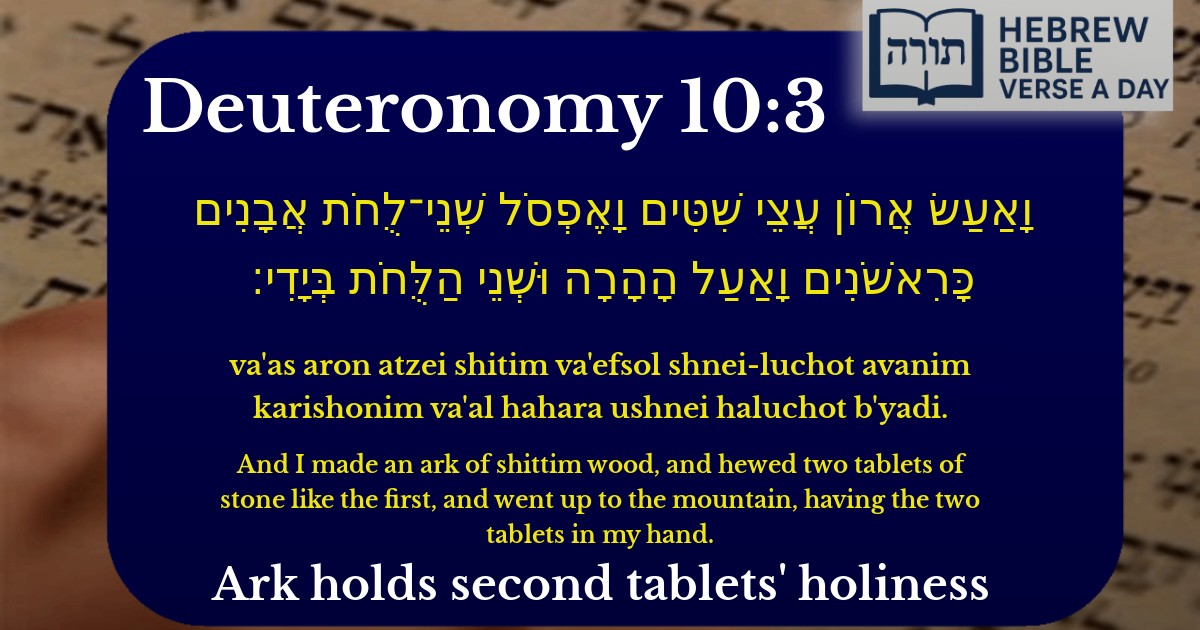Join Our Newsletter To Be Informed When New Videos Are Posted
Join the thousands of fellow Studends who rely on our videos to learn how to read the bible in Hebrew for free!
Hebrew Text
וָאַעַשׂ אֲרוֹן עֲצֵי שִׁטִּים וָאֶפְסֹל שְׁנֵי־לֻחֹת אֲבָנִים כָּרִאשֹׁנִים וָאַעַל הָהָרָה וּשְׁנֵי הַלֻּחֹת בְּיָדִי׃
English Translation
And I made an ark of shittim wood, and hewed two tablets of stone like the first, and went up to the mountain, having the two tablets in my hand.
Transliteration
Va'as aron atzei shitim va'efsol shnei-luchot avanim karishonim va'al hahara ushnei haluchot b'yadi.
Hebrew Leining Text
וָאַ֤עַשׂ אֲרוֹן֙ עֲצֵ֣י שִׁטִּ֔ים וָאֶפְסֹ֛ל שְׁנֵי־לֻחֹ֥ת אֲבָנִ֖ים כָּרִאשֹׁנִ֑ים וָאַ֣עַל הָהָ֔רָה וּשְׁנֵ֥י הַלֻּחֹ֖ת בְּיָדִֽי׃
Parasha Commentary
📚 Talmud Citations
This verse is not quoted in the Talmud.


The Ark of Shittim Wood
The verse describes Moshe Rabbeinu making an ark of shittim (acacia) wood. Rashi (Devarim 10:3) explains that this was a temporary ark, distinct from the one crafted by Betzalel for the Mishkan. The Midrash Tanchuma (Ki Tisa 31) teaches that this ark was made to hold the second set of Luchot until the permanent ark was completed, demonstrating Moshe's urgency to safeguard the Torah even before the Mishkan was fully constructed.
The Second Tablets
Moshe hewed new tablets "like the first ones" (ka'rishonim). The Ramban (Devarim 10:1) notes that this implies they were identical in size, shape, and material, but the Talmud (Bava Batra 14b) states a key difference: the first tablets were entirely the work of Hashem, while the second were hewn by Moshe and inscribed by Hashem. This teaches that even after sin, sincere repentance can restore a relationship with Hashem, though it may not be identical to the original state.
The Ascent with the Tablets
The verse emphasizes that Moshe ascended with both tablets in his hand. The Kli Yakar (Devarim 10:3) highlights that carrying both tablets together symbolizes the unity of the Torah's mitzvot between man and Hashem (the two tablets representing mitzvot between man and G-d, and between man and his fellow). This unity was restored after the sin of the golden calf, showing that complete Torah observance requires both dimensions.